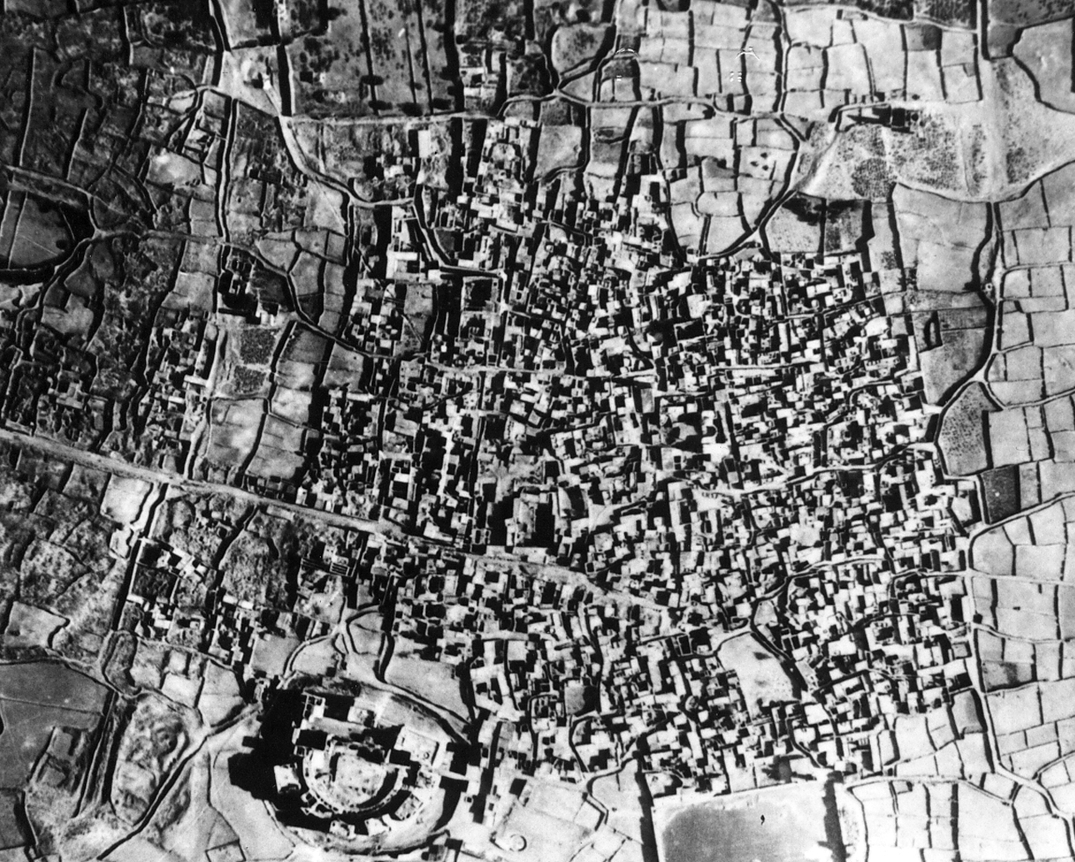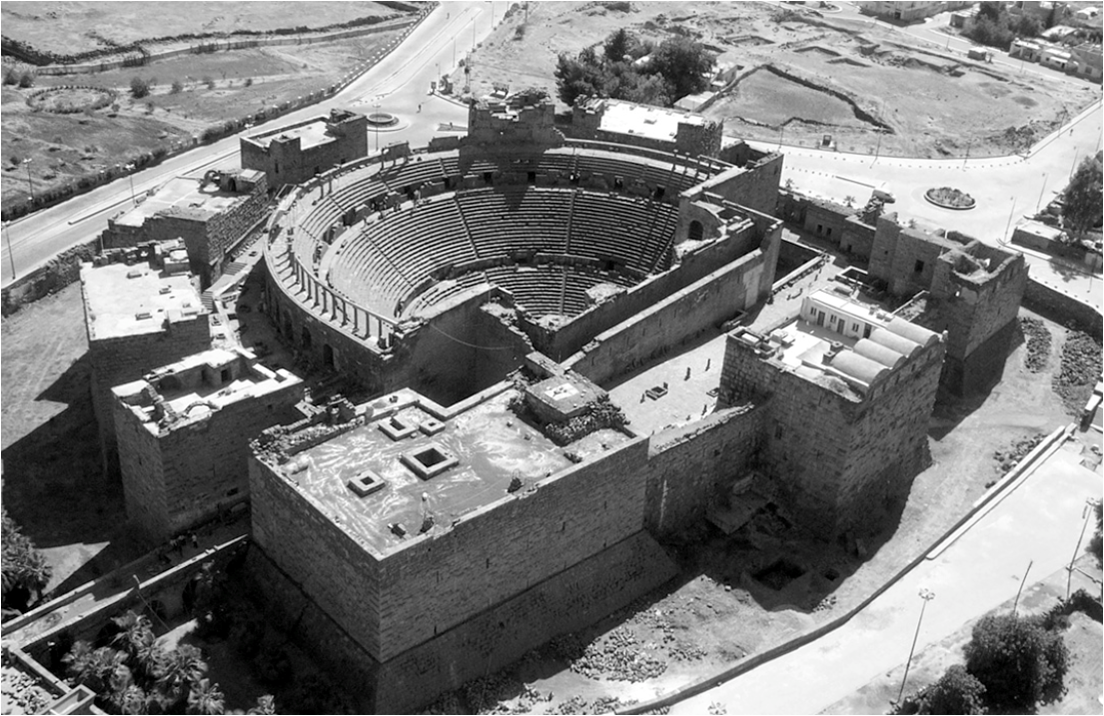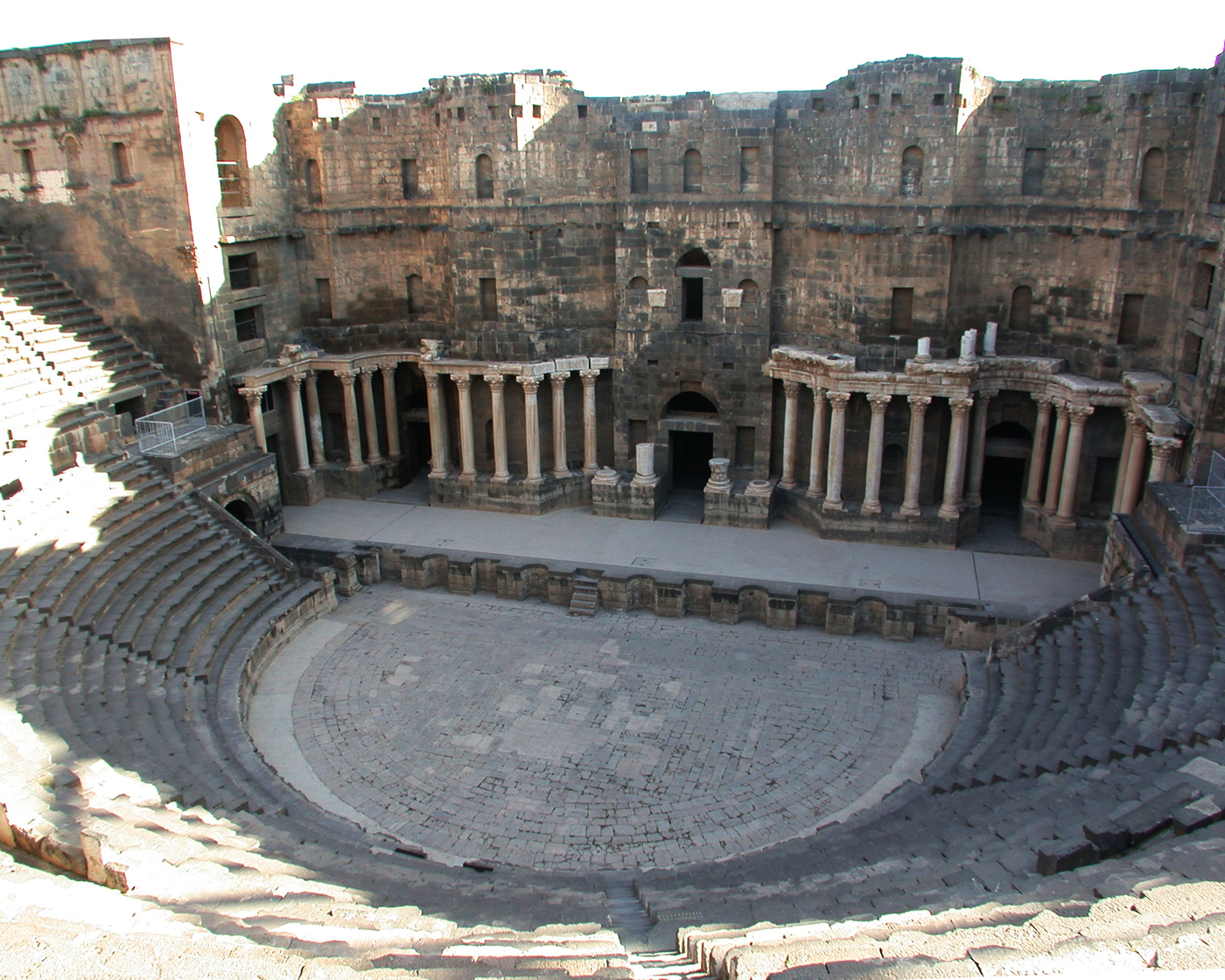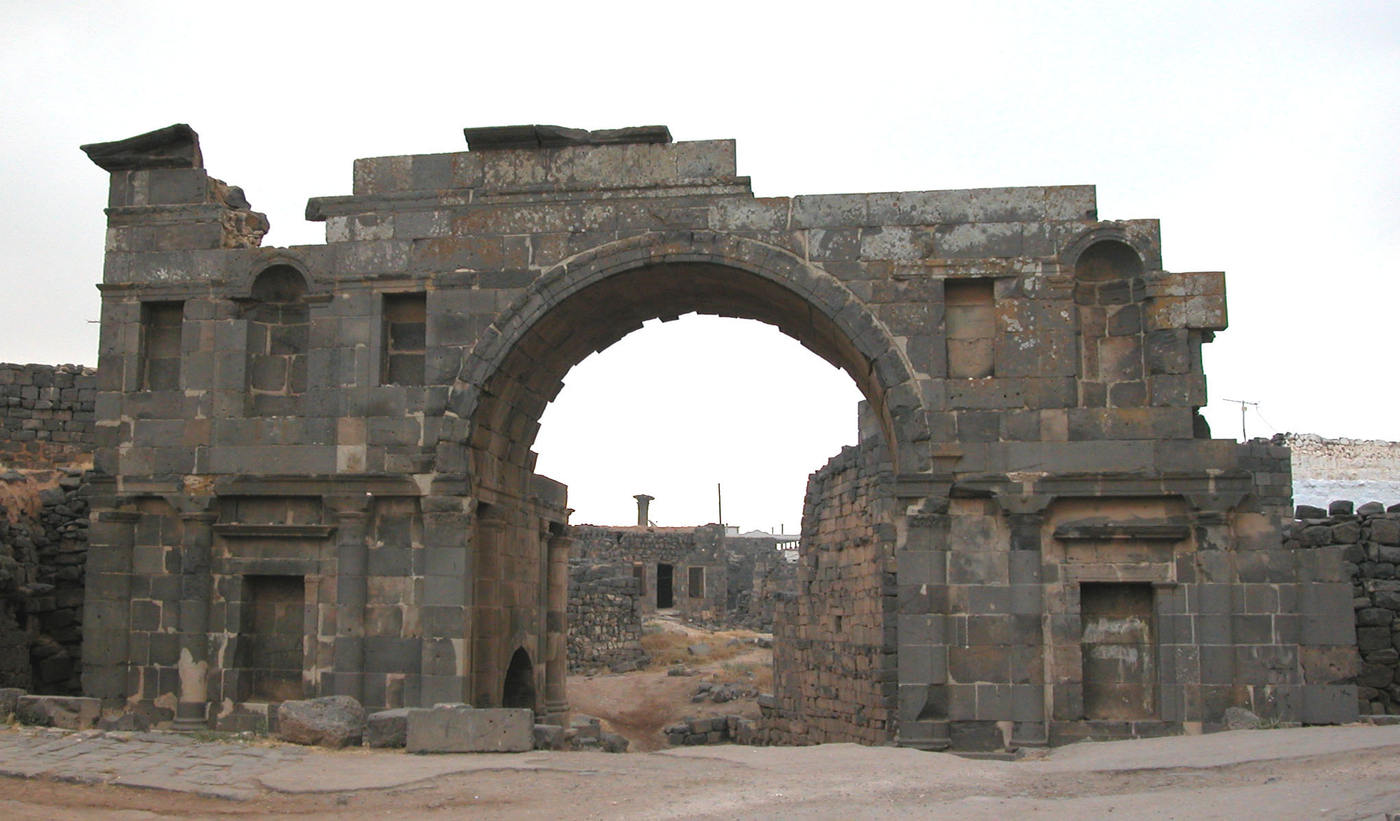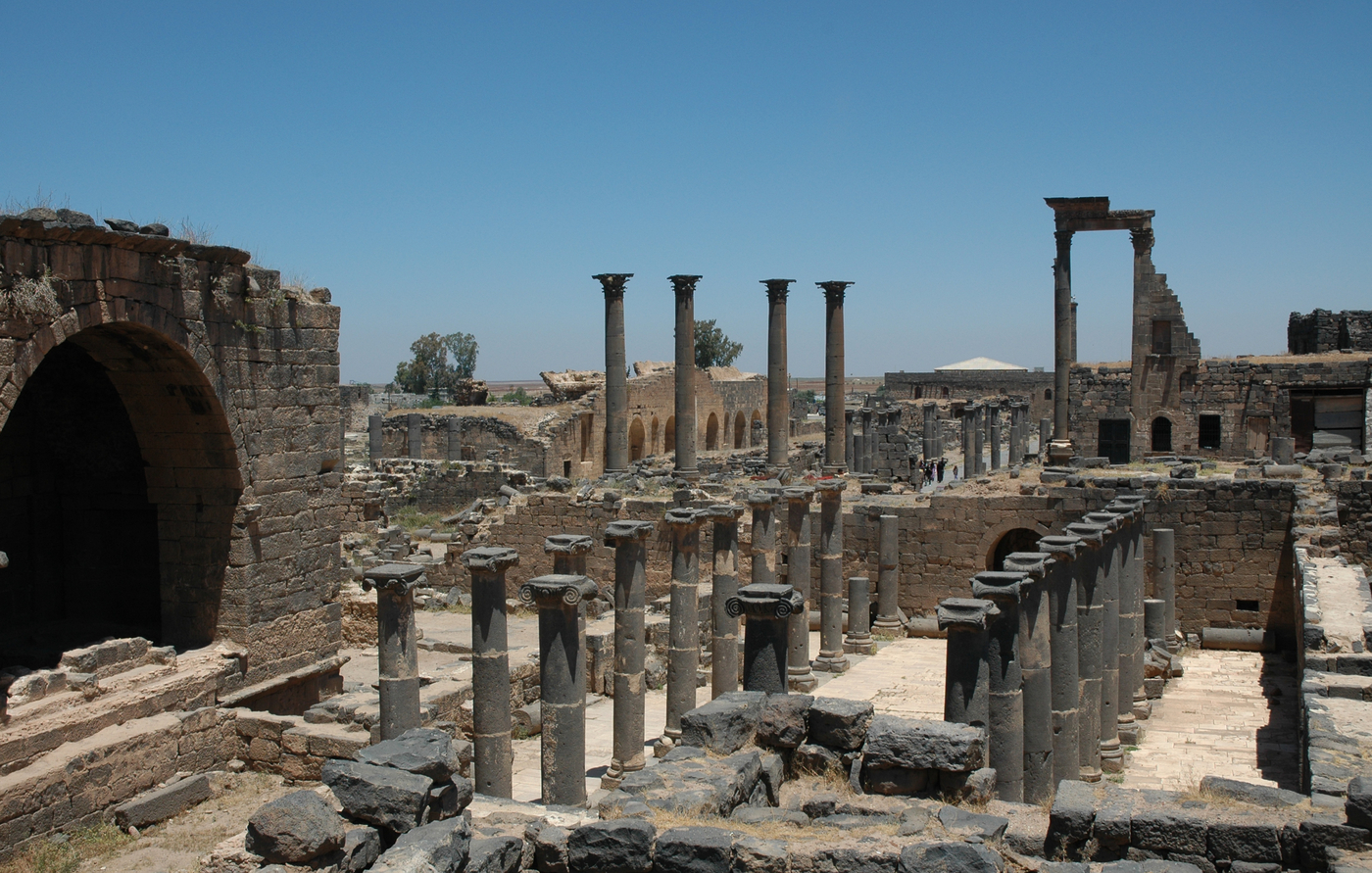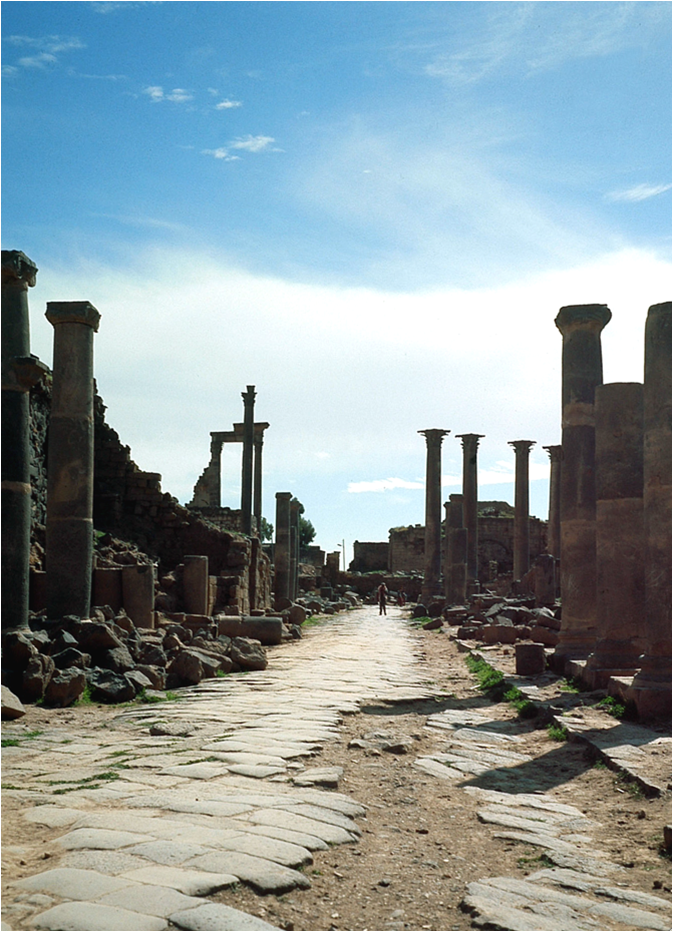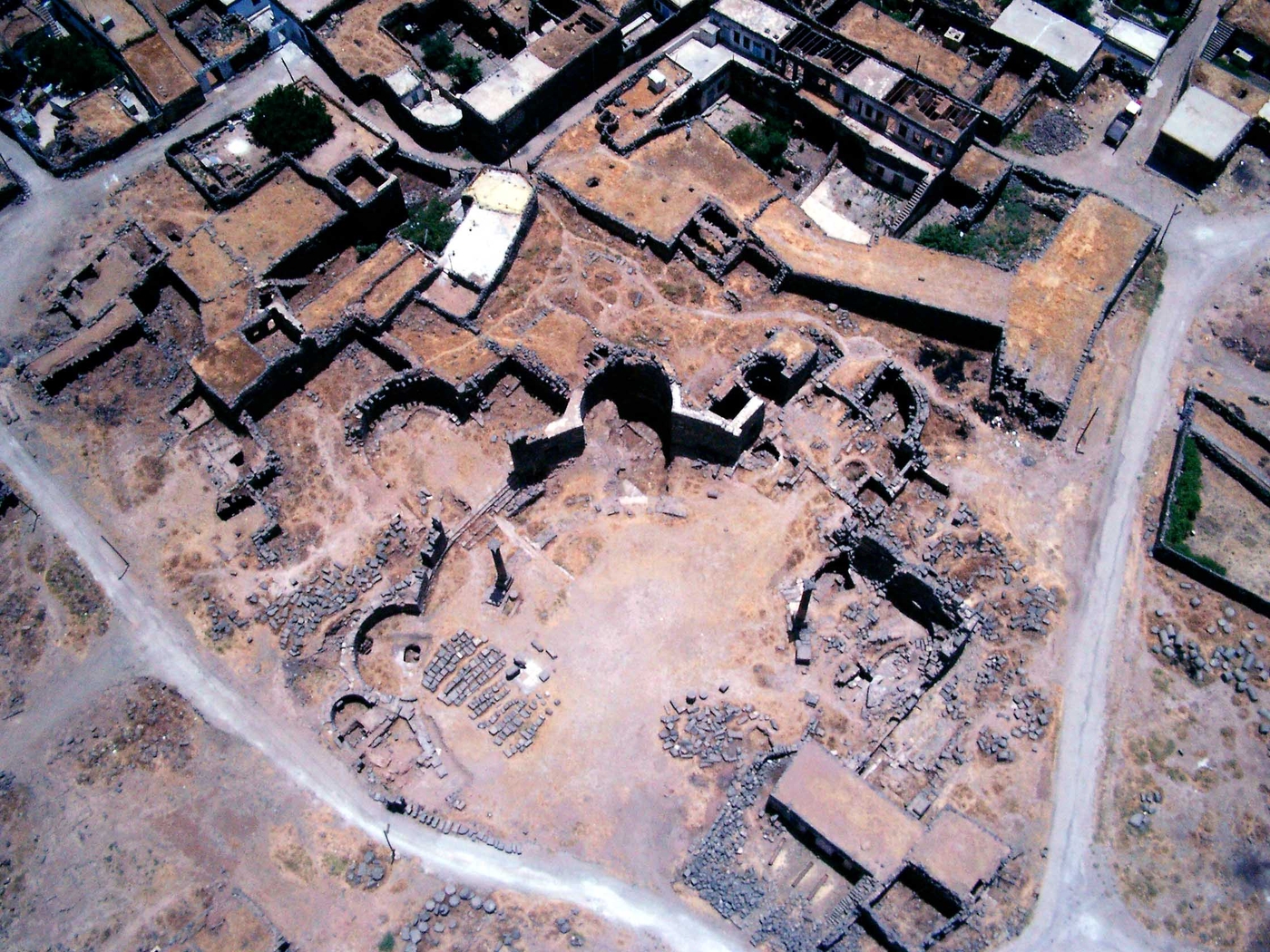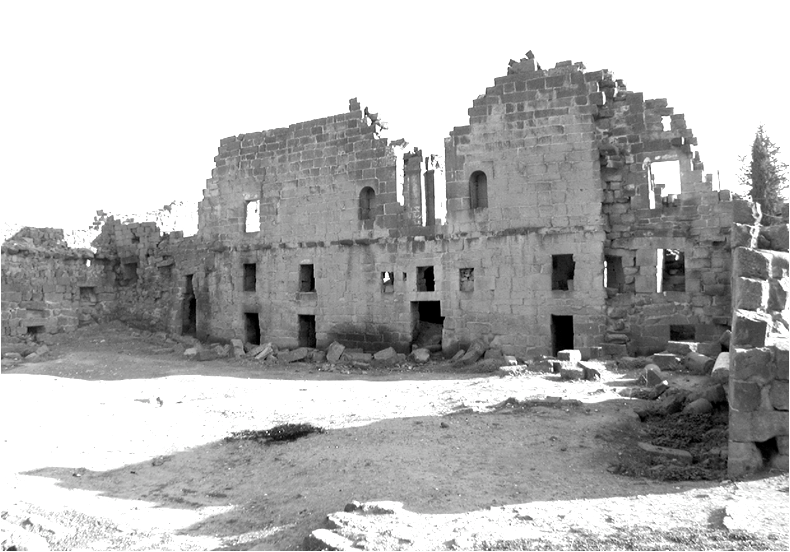Bosra
Located 140 km to the south of Damascus, Bosra, capital of the fertile region of Hauran, stood at the head of several caravan routes from Arabia and a trail leading to the Mediterranean coast.
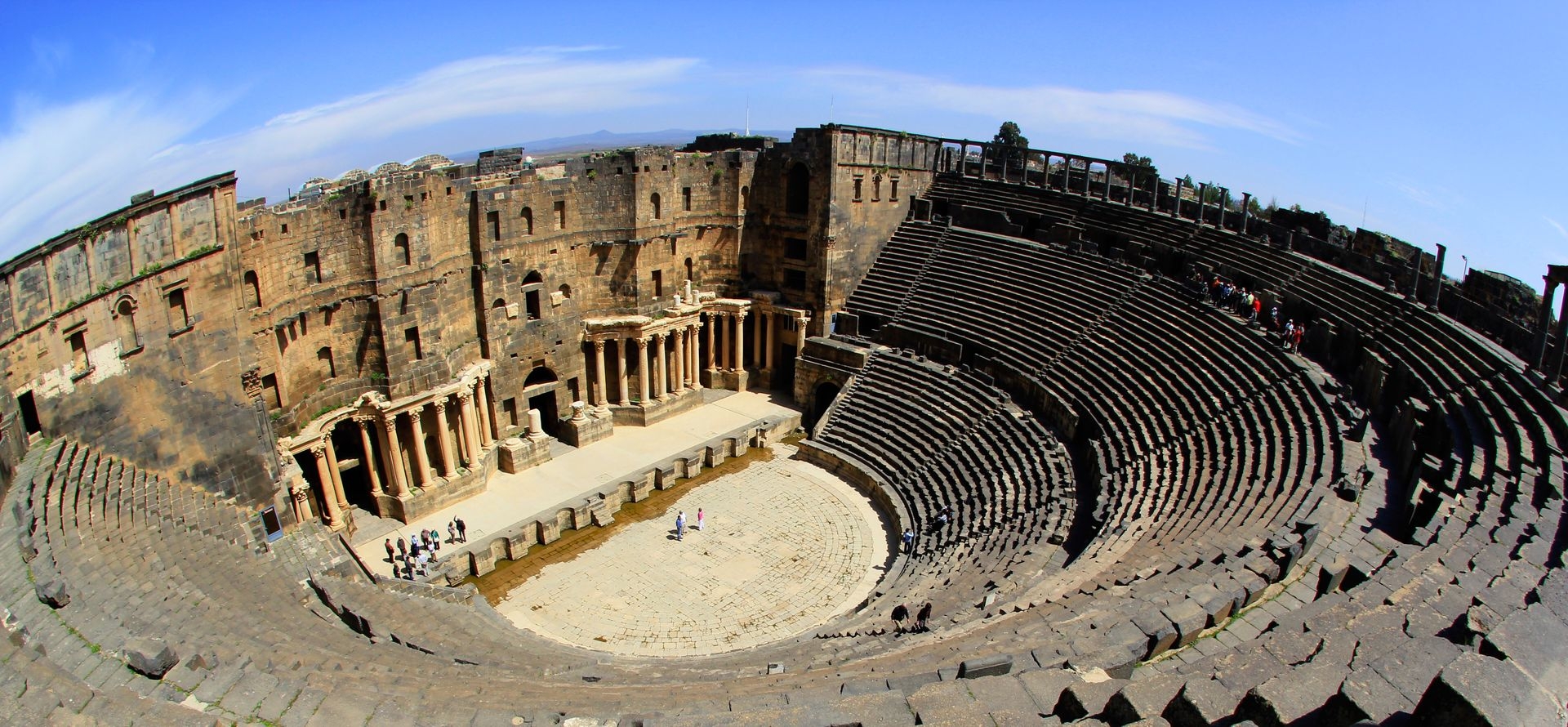
The ancient city of Bosra in Syria contains the extremely well-preserved remains of a 2nd century Roman theatre, and the ruins of Palaeo-Christian monuments and several mosques, including the oldest in the Arab-Muslim world. The capital of the Roman province of Arabia, it was later an important staging post on the road to Mecca. Since 1980, the ancient city of Bosra has been inscribed on the UNESCO World Heritage list.
Background
The city stands on a basalt plateau. This black rock long used for constructing buildings decays into a rich clay soil ideal for crops. Bosra enjoyed a long period of prosperity. It is mentioned as early as the 14th century BCE on tablets from Tell el-Amarna in Egypt as Busrana, attesting to the diplomatic relations between the Egyptians, Phoenicians and the Amorite dynasty. It is later mentioned in the Books of the Maccabees in the second century BCE. Former capital of the north of the Nabatean kingdom, it opened the caravan trade to the Roman world.
Bosra: eastern Roman city
Bosra was incorporated into the Roman Empire in 106 under the name of Colonia Bostra; it became the capital of the Roman province of Arabia. The construction of the theatre, which dates from the 2nd century, was probably begun under Trajan. Fortified between 481 and 1251, it is in an exceptional state of conservation. Its monumental structures include a military camp, several large baths, an amphitheatre, a hippodrome, an aqueduct, and a nymphaeum. Necropoles were built around the city along travel routes.
From the Byzantine Empire to the Arab Conquest
During the Byzantine period, at the height of its prosperity, Bosra was a major market town where Arab caravans came to purchase supplies. Its bishops were known from 210 to the 9th century. Bosra was the first city in southern Syria to be conquered by the Muslim armies in 634, during the phase of Islamic expansion. Bosra has been inhabited for more than 2,000 years and remains almost intact: Nabateans, Romans, Byzantines, Umayyads, Abbasids, Ayyubids and Mamluks have all left their mark on the city, which have made it an extraordinary conservation area for architecture: an open-air museum where the most significant periods in the history of ideas and beliefs are represented.
Archaeological research
From 1981, the French archaeological mission in southern Syria joined a team studying ancient Bosra. The research focused on understanding the town planning of Bosra by making records of the city but also its monuments; several archaeological excavations were carried out, producing a detailed chronology of the phenomena observed, especially for the Nabatean, Roman, Byzantine and Umayyad periods. It also changed the way archaeologists think about urban organisation and its development from the Bronze Age to the modern period by enhancing their understanding of craft production and the consumption of nature resources. This research was carried out in close cooperation with the Directorate-General for Antiquities and Museums in Syria (DGAM) and theInstitut français du Proche-Orient with the support of the French Ministry for Europe and Foreign Affairs (MEAE).
The mission worked with the “Hellenist and Roman Near East Archaeology (APOHR)" team, part of the “Archaeology and Sciences of Antiquity (ArScAn)" laboratory (UMR7041 Nanterre).


